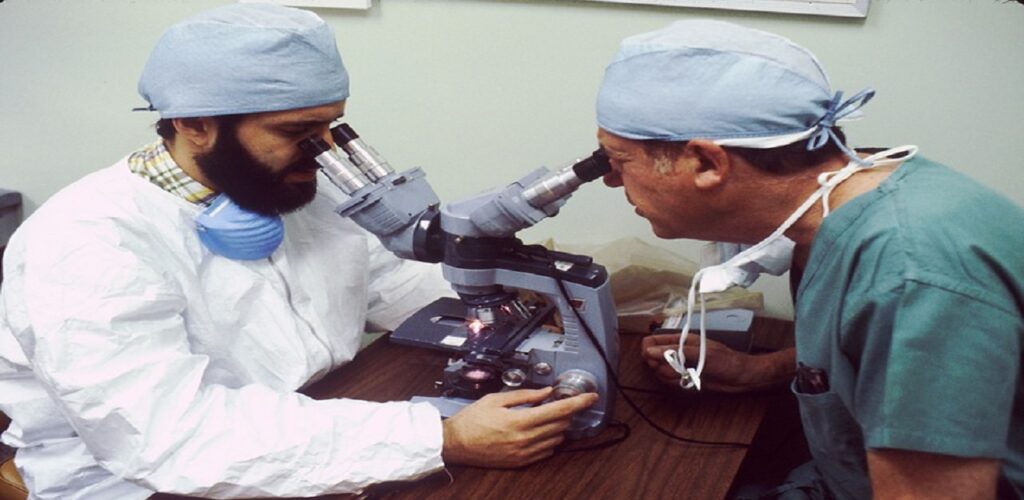Organisms that cannot be seen through our naked eyes are called microorganisms. Microorganisms are also called microbes. We require special devices like microscopes to see them. Microbes are present everywhere from soil to deep water to icebergs to space. Microbes are responsible for balancing the ecosystem on the Earth. Some help in fermentation, providing nutrients for plants, release oxygen, decomposition of wastes or dead bodies while some are pathogens (responsible for causing disease in humans and animals), thus some are beneficial and some are harmful. Microbes exist as unicellular, multicellular, or cell clusters. The study of microorganisms is called microbiology.
Microbes are classified into six major groups that are bacteria, archaea, fungi, protozoa, algae, and viruses. Among these virus groups are special cases of classification and we will see it later.
1. Bacteria
Bacteria were among the first life forms that appeared on Earth. They measure 1 to 10 micrometers long and exist in four different shapes; rod shape(bacillus), spherical shape(coccus), spiral shape(spirilla), and curved shape(vibrio). There are thousands of types of bacteria discovered by the bacteriologists and scientists estimate 5 x 10 30 bacteria live on the Earth.

Bacteria are single celled organisms and are prokaryotic(cells that lack nucleus are called prokaryotes).
Depending on their cell structure bacteria are classified as either Gram-positive or Gram-negative. Further depending on the necessity of oxygen, bacteria are divided as aerobic, anaerobic, and facultative anaerobes.
Aerobic bacteria require oxygen for their survival, anaerobic bacteria can live without oxygen and facultative anaerobe bacteria can live in both environments.
Further classification based on way of obtaining energy
Autotrophs – Bacteria that make their own food. They are called chemoautotrophs if they obtain food using chemical reactions.
Heterotrophs – Bacteria that obtain food by consuming other organisms.
Saprophytes – Bacteria that obtain energy from decaying bodies.
2. Archaea
Archaea also called Archaebacteria are different from the actual bacteria due to their different cell wall structure and they lack peptidoglycans. Archaeans are further divided based on their habitat that is methanogens (methane gas-producing bacteria/organism), halophiles (archaebacteria that live in salty environments), thermophiles (archaebacteria that live at extremely hot temperatures), and psychrophiles (archaebacteria that live in cold-temperature). The size of archaea ranges from 0.1 μm to 15 μm (micrometer) in diameter.
3. Fungi
Fungi are mainly found on the land or in water bodies. They can be single cellular or multicellular and play an important role in the cycling of carbon, nitrogen, and other elements. A group of fungi that grows on the soil and dead plant matter are called decomposers and are useful. Some groups of fungi are harmful to animals and plants and are termed parasites. Some common diseases caused by fungi are ringworm, mycetoma, fungal eye and nail infection, histoplasmosis, sporotrichosis, aspergillosis, candidiasis, etc. Fungi reproduce by releasing spores(a unit cell responsible for reproduction). The size of most of the fungi is 2–10 µm (micrometer) while some may grow up to few centimeters in length.

4. Protozoa
Protozoa are single-celled organisms found in most habitats. They are eukaryotes and have complex internal structures to carry out complex metabolic activities. Protozoa are considered to make up the largest group of organisms on the Earth and they rely on organic material for their nutrition. More than 50,000 species of protozoa have been discovered. The size of the protozoa measures between the size range of 50 μm to 150 μm. Our human body may consist of hundreds to thousands of protozoa, like other microbes, not all protozoa are harmful to humans, some are pathogens.
5. Algae

Algae are a group of microbes capable of carrying out photosynthesis to prepare their own food. They are found unicellular/multicellular with a diverse group of aquatic organisms but cannot be considered as plants because they lack true roots, stem, leaves, and vascular systems. They take a leafy appearance when growing in groups in fresh and saline water. Some species of algae also grow on terrestrial lands on the tree trunks, snow, soil. Cyanobacteria and Eukaryotic algae are two different classifications of algae. Algae are very important in nature because they feed many aquatic animals and they produce enough oxygen through the process of photosynthesis. Since algae are rich in organic content their decomposition into the earth produces fossil fuels.
6. Virus
Viruses are a special group of classification of microbes, they are not considered as living organisms because they reproduce only in the cells of other living organisms(host cells). They are much smaller than the bacteria, their size ranges from 5 – 300 nanometers and is known to cause the deadliest diseases in human beings. Viruses are classified depending upon the type of nucleic acid they are made up of either DNA or RNA and whether their nucleic acid is single-stranded or double-stranded. Recently viruses are also classified based on the study of molecular analysis of their replicative cycles. The majority of the viruses discovered have RNA genomes. There are millions of types of viruses but only 5000 different types have been discovered.

Viruses are only active and harmful when they bind and infect host cells, otherwise, they are inactive and harmless. Once they incubate and infect host cells, viruses get enough nutrition from the cell and replicate at a faster rate targeting to infect other cells. If the concentration of the virus in the body increases drastically our immune system fails to encounter this pathogen and we fall sick.
Some viruses like the HIV virus undergo mutation at a very fast rate challenging immunologists hard to develop the vaccine.
Note – A single unit particle of a virus is called a virion.
Useful Glossary
- Pathogens – Disease-causing microbes are called pathogens.
- Unicellular – Organisms made up of single cells are called unicellular organisms.
- Multicellular – Organisms made up of many cells are called unicellular organisms.
- Habitat – The natural place or environment of an organism.
- Eukaryotes – Organisms whose cell has a nucleus.
- Prokaryotes – Organisms whose cells lack a nucleus.
- Photosynthesis – It is a process in which plants/organisms prepare their own food in the presence of sunlight using water and carbon dioxide gas.
- Nucleic acid – They are biomolecules present in the cell.
- Mutation – The process of modification of the structure of genes that can be passed to the next generation upon reproduction/replication.

